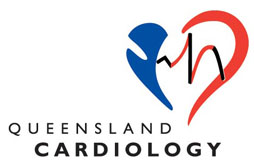Pacemaker Implantation
When is a Pacemaker required?
The normal heart beat is generated by the cardiac specialized conduction tissue known as the sinus node, also known as the intrinsic pacemaker of the heart. This cardiac tissue sometimes fails to generate a heart beat because of damage to that tissue through either inflammation, infection or generalised scarring.
The heart beat is then either extremely slow or fails to generate in which case the patient will feel extremely faint, dizzy and fatigued.
How is it done?
The treatment for this condition is to place an electronic pacemaker which is a small device about the size of a 50s piece which is placed beneath the skin, generally just below the clavicle on either side. From that device electrodes or pacing leads are connected and are placed via the vein underneath the collar bone directly into the heart and are screwed to the heart muscle from the inside.
The pacemakers are very sophisticated devices and can recognize when the heart generates its own heart beats and will continue to sit and watch the normal heart beat but should the heart fail to generate its own beat the pacemaker will then pace at a specific timing sequence and issue little electrical pulses which will generate the heart beat. Generally 2 leads are placed – one in the right upper chamber and one in the right lower chamber. Occasionally 3 pacing leads are required – one to stimulate the left lower chamber in addition to the right lower chamber to allow both chambers to beat synchronously. This is known as biventricular pacing.
To have a pacemaker placed you would need to be admitted to a hospital with special expertise and doctors trained in the ability to place a pacemaker. The procedure is performed using local anaesthesia and heavy sedation. The procedure is performed in about an hour. Generally the patient is observed closely for 4 hours following the procedure and can usually be discharged home the following day.
The procedure is performed with a very high success rate in excess of 99% and has a low complication rate. Complications include puncturing the heart or the lung 1:1000 chance, thrombosis of the arm veins through which the pacing leads were placed 1:1000 and a risk of golden Staph infection 2:100 chance.
After the procedure
Patients are requested not to drive for 2 weeks following a new pacemaker implantation and are advised to avoid excessive stretching so as not to dislodge the pacing leads that have just been placed but generally once the leads and the pacemaker have been established well in their current location the patient can live a full unrestricted lifestyle. The pacemaker battery function generally lasts for 10 years however, the patient is followed up initially at 3 months and then on a yearly basis in the clinic. Newer pacemakers will be able to allow for home monitoring which will further decrease the need to be reviewed in the clinic until the battery needs to be replaced.
If you have any further questions, please contact us at:
Queensland Cardiology
St Vincent’s Private Hospital Northside
North Medical Suites, Green Lifts Level 3,
627 Rode Road
Chermside Q 4032
(07) 3861 5522

